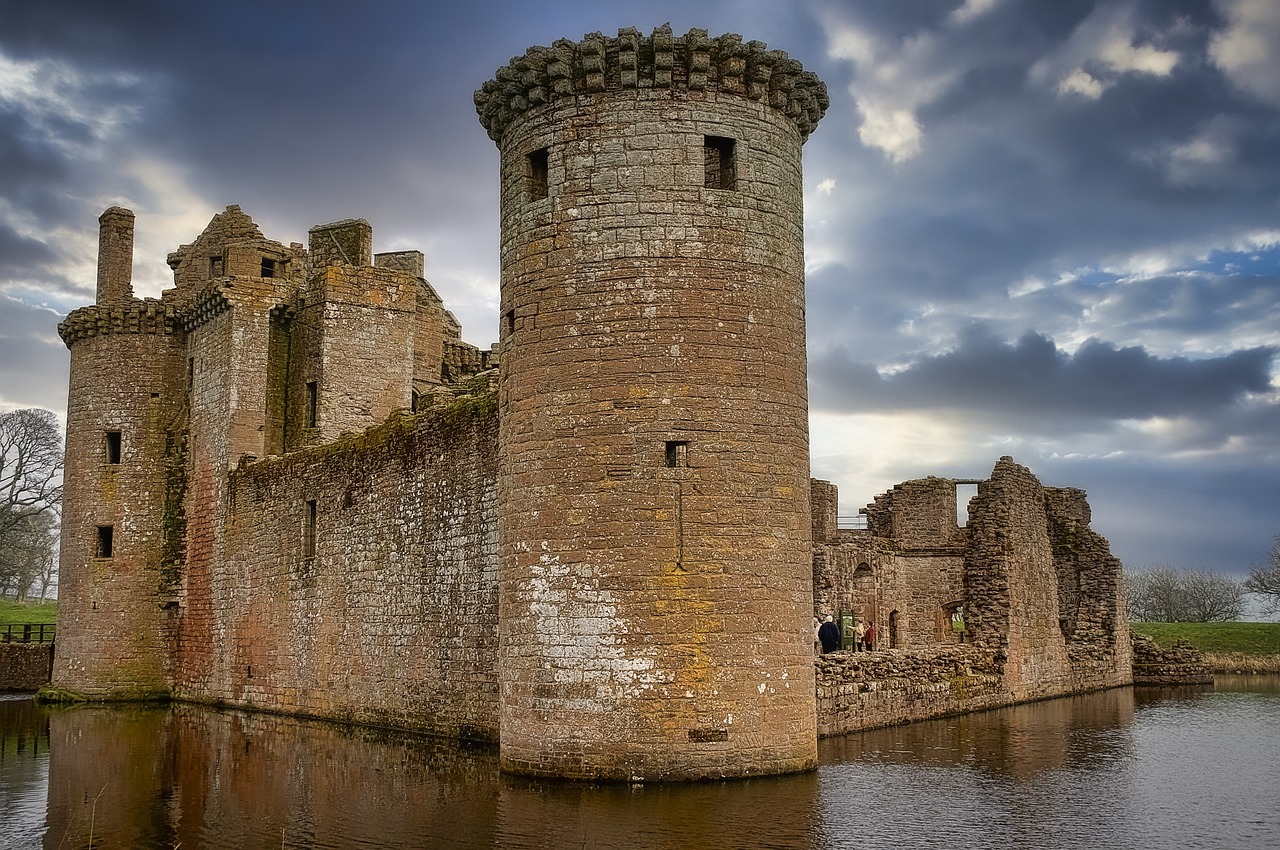Its unique triangular design is instantly recognisable – it’s the only triangular castle in Britain.
Built in the 13th century, the castle has a dramatic history tied to the Scottish Wars of Independence. Its strategic position near the English border meant it faced numerous sieges, most famously in 1300 when Edward I of England attacked with a massive force. Despite being defended by only 60 men, the castle garrison held out valiantly before finally surrendering.
The castle’s architecture is remarkable. Twin-towered gatehouse, mighty sandstone walls, and a wide moat create an imposing presence in the landscape. The geometric symmetry of its triangular design was highly innovative for its time. Each corner has a round tower, and the twin-towered gatehouse contains intricately carved decorations – including the Maxwell family’s coat of arms, who owned the castle for centuries.
Today, visitors can cross the moat via a wooden bridge (replacing the original drawbridge), explore the atmospheric ruins, and see fascinating architectural details like the murder holes above the entrance. The interior bailey includes the remains of grand halls, living quarters, and service buildings. There’s also an excellent visitors’ centre with exhibits about the castle’s history and medieval warfare.
The surrounding nature reserve, with its salt marshes and waterfowl, adds to the castle’s atmospheric setting. It’s particularly beautiful in the early morning or at sunset when the red sandstone walls seem to glow.


